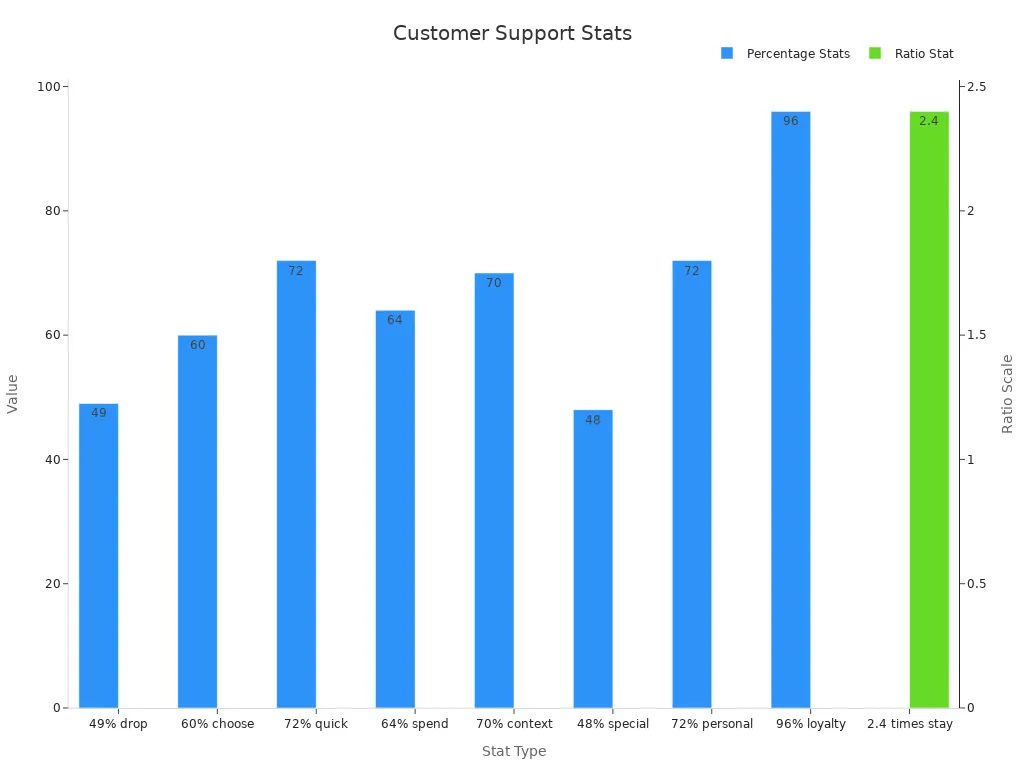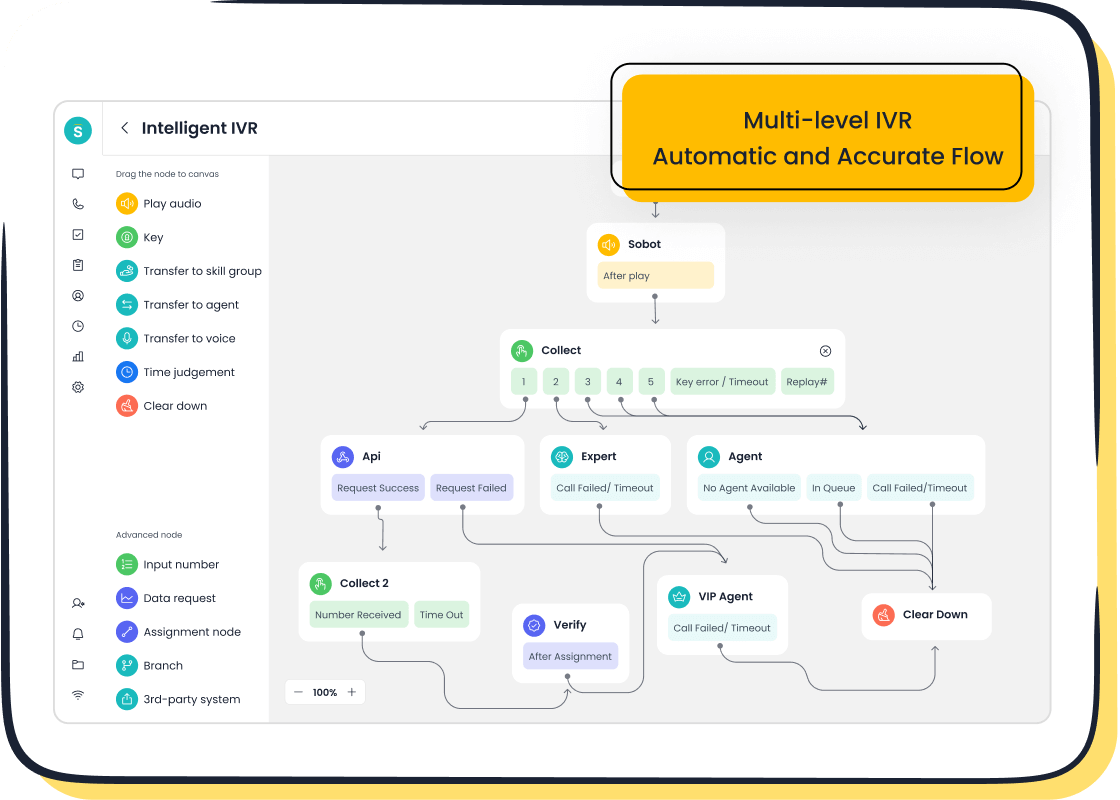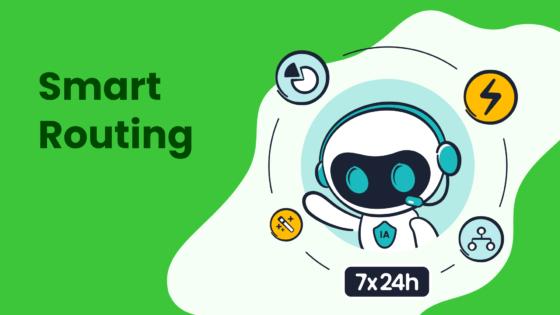How to Measure Customer Support Performance in 2025

Measuring customer support performance in 2025 isn’t just important—it’s essential. Customers expect faster responses, personalized experiences, and seamless interactions across channels. For example, over half of customers will switch to a competitor after one bad experience, making it clear that businesses must stay proactive. With tools like Sobot’s solutions, you can track customer support performance metrics like CSAT and NPS to understand satisfaction and loyalty trends. These insights help you deliver better service, retain customers, and grow your business in a competitive landscape.
Why Measuring Customer Support Performance is Essential
The Role of Customer Support in Business Success
Customer support isn’t just about solving problems—it’s a cornerstone of business success. When you deliver exceptional service, customers stick around, spend more, and recommend your brand to others. Studies show that improving customer experience can boost sales revenue by 2-7% and profitability by 1-2%. Plus, 73% of businesses offering above-average customer experiences outperform their competitors financially.
Why does this matter? Because every interaction with your support team shapes how customers view your brand. Positive experiences lead to loyalty, while poor service can drive them straight to your competitors. By measuring customer support performance metrics like satisfaction scores and resolution times, you can identify areas to improve and ensure your team delivers consistent, high-quality service.
Evolving Customer Expectations in 2025
Customer expectations are changing fast, and 2025 is no exception. People want faster responses, personalized experiences, and seamless service across channels. For example, 72% of customers expect immediate service, and 96% say customer support is critical for brand loyalty.
Take a look at this chart highlighting key statistics:

What does this mean for you? It’s simple: meeting these expectations isn’t optional. Customers are 2.4 times more likely to stay with your brand if their issues are resolved quickly. They’ll even spend more if you solve problems where they are. Tracking metrics like average response time and customer satisfaction helps you stay ahead of these demands and keep your customers happy.
The Influence of Technology on Customer Support Metrics
Technology is reshaping how you measure and improve customer support. AI and automation are game-changers, helping businesses deliver faster, smarter service. In fact, 69% of support leaders plan to invest more in AI to enhance customer interactions.

Metrics like average resolution time and agent performance ratings are now easier to track thanks to advanced tools. Platforms like Sobot’s Voice/Call Center provide real-time monitoring and analytics, giving you insights into team performance and customer satisfaction. These tools don’t just help you measure success—they help you achieve it by identifying strengths, weaknesses, and opportunities for growth.
Tip: Use AI-powered solutions to streamline your operations and improve customer experience.
Benefits of Measuring Customer Support Performance
Enhancing Customer Satisfaction and Retention
Measuring customer service performance is your secret weapon for keeping customers happy and loyal. When you track metrics like customer satisfaction score (CSAT) and customer effort score (CES), you gain valuable insights into how well your team meets expectations.
| Metric | Description | Importance |
|---|---|---|
| Customer Satisfaction Score (CSAT) | Measures satisfaction with specific interactions, products, or services. | Immediate feedback, service quality assessment, and a predictor of retention. |
| Customer Effort Score (CES) | Assesses ease of interaction with the company. | Loyalty predictor, identifies friction points, and provides a competitive edge. |
Why does this matter? Satisfied customers are more likely to stick around and spend more. They’re also more likely to recommend your brand to others, boosting your profitability. By focusing on these metrics, you can reduce customer churn and create experiences that keep people coming back.
Tip: Happy customers don’t just stay—they bring their friends along too!
Identifying Operational Pain Points
Tracking performance metrics doesn’t just help your customers—it helps you. By analyzing data, you can uncover operational issues that slow your team down or frustrate your customers. For instance, if resolution times are too long, it might signal a need for better training or tools.
| Evidence Type | Description |
|---|---|
| Customer Loyalty | 32% of customers would leave a brand after one bad experience (PWC). |
| Buying Decisions | 70% of buying decisions depend on customer treatment (McKinsey). |
When you address these pain points, you improve efficiency and reduce customer churn. Customers notice when you make their lives easier, and that builds trust and loyalty.
Driving Business Growth Through Data-Driven Insights
Data isn’t just numbers—it’s a roadmap for growth. By analyzing customer service performance, you can make smarter decisions that drive your business forward. For example, data can help you identify trends, streamline processes, and allocate resources more effectively.
- Companies using data-driven strategies make better decisions and innovate faster.
- Retailers optimize supply chains, while healthcare providers personalize treatments using data insights.
- Businesses that leverage data science adapt quickly to market changes, staying ahead of competitors.
When you use data to guide your strategy, you’re not just reacting to problems—you’re preventing them. This proactive approach leads to better customer experiences, stronger loyalty, and long-term growth.
Key Customer Support Performance Metrics to Track

Tracking the right metrics is essential for evaluating your customer service performance. These metrics provide insights into how well your team meets customer expectations and identifies areas for improvement. Let’s dive into the key categories you should focus on.
Operational Metrics
Operational metrics measure the efficiency of your customer support processes. They help you understand how quickly and effectively your team resolves issues.
Examples: First Response Time, Average Resolution Time, Ticket Volume
- First Response Time (FRT): This measures how quickly your team responds to a customer’s initial inquiry. A fast FRT reassures customers that their concerns are being addressed, which builds trust and loyalty. Automated tools like Sobot’s Voice/Call Center can help reduce response times by sending instant acknowledgments.
- Average Resolution Time (ART): ART tracks how long it takes to resolve an issue from start to finish. Shorter resolution times often indicate better service quality and higher customer satisfaction.
- Ticket Volume: Monitoring ticket volume helps you identify trends in customer inquiries. A sudden spike might signal a recurring issue that needs immediate attention.
Tip: Regularly review these metrics to spot inefficiencies and improve your team’s performance.
Customer Experience Metrics
Customer experience metrics focus on how customers feel about their interactions with your brand. These metrics are crucial for understanding satisfaction and loyalty.
Examples: CSAT, NPS, CES
- Customer Satisfaction Score (CSAT): This metric measures how satisfied customers are with a specific interaction. It’s a quick way to gauge service quality and identify areas for improvement.
- Net Promoter Score (NPS): NPS evaluates customer loyalty by asking how likely they are to recommend your brand. It provides a long-term view of customer relationships.
- Customer Effort Score (CES): CES assesses how easy it is for customers to get their issues resolved. Lower effort scores often lead to higher customer retention.
| Metric | Strengths | Weaknesses |
|---|---|---|
| CSAT | Quick feedback for immediate improvements | Limited to specific interactions |
| NPS | Long-term loyalty insights | Doesn’t pinpoint specific issues |
Using these metrics together gives you a comprehensive view of your customer experience rating.
Quality Assurance Metrics
Quality assurance metrics evaluate the effectiveness of your team’s interactions with customers. They ensure that your service meets high standards.
Examples: Quality Score, Agent Performance Ratings
- Quality Score: This metric assesses the quality of customer interactions based on predefined criteria like tone, accuracy, and problem-solving skills.
- Agent Performance Ratings: These ratings measure individual agent performance, helping you identify top performers and those who need additional training.
Note: Studies show that 86% of organizations agree quality assurance improves service quality, while 76% say it boosts customer satisfaction.
By tracking these metrics, you can enhance your team’s performance and deliver exceptional customer support.
Advanced Metrics for 2025
As customer expectations evolve, advanced metrics like predictive analytics and AI-driven insights are becoming essential tools for measuring customer support performance metrics. These metrics help you anticipate customer needs, improve service quality, and stay ahead of the competition.
Predictive Analytics
Predictive analytics uses historical data to forecast future trends. It’s like having a crystal ball for your customer support. For example, you can predict metrics like "Purchase Probability" or "Churn Probability." This helps you identify which customers are likely to leave and take action before it’s too late.
| Metric Type | Description |
|---|---|
| Predictive Analytics | Allows users to create reports using metrics like 'Purchase Probability' and 'Churn Probability'. |
| Combined Use | Enhances understanding of customer behavior and optimizes engagement and conversion rates. |
By using predictive analytics, you can make proactive decisions. For instance, if you notice a high churn probability, you can offer personalized discounts or faster resolutions to retain those customers. This approach not only improves customer satisfaction but also boosts loyalty.
AI-Driven Insights
AI-driven insights take customer service metrics to the next level. They analyze customer behavior and provide intelligent predictions about future actions. Imagine knowing what your customers want before they even ask!
| Application Area | Benefit |
|---|---|
| Proactive Decision Making | Enables organizations to anticipate future trends and identify potential risks. |
| Risk Management | Identifies emerging risks and quantifies their likelihood and impact for better preparedness. |
AI tools can also help you manage risks and compliance. For example, they can identify potential issues in your processes and suggest adjustments. This ensures your customer support stays efficient and compliant with industry standards.
Tip: Combining predictive analytics with AI insights gives you a complete picture of your customer support performance metrics. This duo helps you optimize engagement, reduce risks, and deliver exceptional service.
By leveraging these advanced metrics, you can transform your customer support into a proactive, data-driven powerhouse. These tools don’t just measure performance—they help you improve it.
How to Measure Customer Service Effectively
Selecting the Right Customer Support Performance Metrics
Choosing the right metrics is the first step to measure customer service effectively. Not all metrics are created equal, so you need to focus on those that align with your goals. For example, if your priority is customer loyalty, tracking Net Promoter Score (NPS) and Customer Retention Rate can provide valuable insights. If efficiency is your focus, metrics like Average Handle Time (AHT) and Resolution Rate are essential.
| Metric | Description |
|---|---|
| Customer Satisfaction Score | Measures customer satisfaction with the service provided. |
| Net Promoter Score | Assesses customer loyalty and likelihood to recommend the service. |
| Customer Retention Rate | Indicates the percentage of customers retained over a specific period, crucial for understanding loyalty. |
| Average Handle Time | Tracks the average time taken to resolve customer interactions, reflecting efficiency. |
| Customer Effort Score | Evaluates how easy it is for customers to achieve their goals, impacting loyalty and future purchases. |
Tracking these metrics helps you identify patterns and improve service delivery. For instance, analyzing customer effort can reveal friction points that impact loyalty. Tools like Sobot’s Voice/Call Center make it easier to monitor these metrics in real-time, ensuring you stay on top of your performance.
Leveraging Tools Like Sobot's Voice/Call Center
Technology plays a huge role in measuring customer service effectively. Sobot’s Voice/Call Center is a powerful tool that simplifies this process. It offers features like real-time monitoring, call tracking, and AI-powered analytics. These capabilities allow you to measure metrics like First Response Time and Resolution Rate with precision.
Imagine this: A customer calls with an issue, and your agent resolves it in minutes. Sobot’s system tracks the interaction, analyzes the resolution time, and provides insights into the agent’s performance. This data helps you identify strengths and areas for improvement. Plus, with global number availability and intelligent IVR, you can offer seamless support to customers worldwide.
Tip: Use tools like Sobot’s Voice/Call Center to automate repetitive tasks and focus on delivering exceptional service.
Using Customer Feedback to Improve Service
Customer feedback is a goldmine for improving service. It tells you what’s working and what’s not. For example, Jupiter, a digital banking startup, used feedback to address issues like outdated information and long agent learning curves. By acting on this feedback, they reduced Average Handle Time and increased Customer Satisfaction Score.
You can collect feedback through surveys, social media, or even direct conversations. Metrics like NPS and CSAT help you understand customer sentiment. Combining this data with real-time interaction monitoring gives you a complete picture of your service quality.
Note: Don’t just collect feedback—act on it. Customers appreciate when their voices lead to real changes.
Establishing a Continuous Monitoring and Reporting Process
Continuous monitoring and reporting aren’t just tasks—they’re the backbone of effective customer support in 2025. They help you stay on top of performance, identify trends, and make informed decisions. But how do you set up a process that works seamlessly? Let’s break it down.
First, start with clear objectives. What do you want to achieve? Whether it’s improving response times or boosting customer satisfaction, having a goal keeps your team focused. Next, define roles and responsibilities. Everyone should know their part in the process, from collecting data to escalating issues. Documenting these standards ensures consistency and accountability across the board.
Metrics are your best friend here. Use Key Performance Indicators (KPIs) like First Response Time or Customer Satisfaction Score to measure success. Key Risk Indicators (KRIs) can also help you spot potential problems before they escalate. For example, if your average resolution time starts creeping up, it might signal a need for additional training or resources.
Automation takes this process to the next level. Tools like Sobot’s Voice/Call Center offer automated data collection and analysis, giving you a real-time view of your operations. Imagine having instant insights into call volumes, agent performance, and customer feedback—all in one place. Automated reporting also simplifies decision-making by presenting actionable insights at a glance.
Tip: Regularly review your reports to identify trends and adjust your strategies. A proactive approach keeps your customer support running smoothly.
Finally, don’t forget to share these insights with your team. Transparent reporting fosters collaboration and helps everyone stay aligned with your goals. By establishing a robust monitoring and reporting process, you’re not just tracking performance—you’re setting the stage for continuous improvement.
Adapting to Future Trends in Measuring Customer Service

The Role of AI and Automation in Customer Support
AI and automation are transforming how you measure and deliver customer support. These technologies handle repetitive tasks, freeing your team to focus on meaningful interactions. For instance, AI chatbots can provide personalized responses 24/7, ensuring customers always get the help they need. They also analyze customer service metrics like response times and satisfaction scores, helping you identify areas for improvement.
| Benefit | Source Link |
|---|---|
| AI chatbots automate responses to common queries, improving efficiency. | Richpanel |
| AI optimizes workflows by suggesting which inquiries to automate. | Zendesk |
| Automation reduces the need for large support teams, saving costs. | Richpanel |
By leveraging AI, you can streamline operations and enhance customer experiences. Imagine a system that predicts customer needs before they even ask. That’s the power of AI-driven insights.
Tip: Use AI tools to track customer service metrics in real-time and make data-driven decisions.
Personalization and Predictive Analytics
Personalization isn’t just a trend—it’s a necessity. Customers expect brands to recognize their preferences and offer tailored solutions. Predictive analytics takes this a step further by forecasting customer behavior based on past interactions. This helps you anticipate needs and deliver proactive support.
| Statistic | Source |
|---|---|
| 91% of consumers prefer brands that provide relevant recommendations. | Accenture |
| Personalized experiences can boost revenue by 6% to 10%. | Boston Consulting Group |
| Predictive analytics is projected to grow at a CAGR of 28.3% by 2030. | Grand View Research |
When you combine personalization with predictive analytics, you create a powerful strategy. For example, you can use customer service metrics to identify high-value customers and offer them exclusive deals. This not only improves satisfaction but also builds loyalty.
Note: Personalized experiences reduce churn rates and increase customer retention.
Preparing for Emerging Customer Expectations in 2025
Staying ahead of customer expectations requires adaptability. In 2025, customers will demand faster responses, seamless interactions, and sustainable practices. To meet these needs, you must embrace new technologies and strategies.
- Adopt tools like chatbots and social media platforms to enhance responsiveness.
- Leverage AI to analyze data and personalize interactions.
- Offer flexible payment methods and prioritize sustainability in your services.
By aligning your approach with these trends, you can exceed customer expectations and stay competitive. Remember, the key is to continuously evolve and refine your strategies based on customer feedback and market insights.
Tip: Regularly review customer service metrics to identify trends and adapt your processes accordingly.
Measuring customer support performance is no longer optional—it’s the key to staying competitive in 2025. Metrics like Net Promoter Score (NPS), Customer Effort Score (CES), and Customer Satisfaction (CSAT) help you understand loyalty, ease of interactions, and overall satisfaction. Ignoring these can harm your brand’s reputation and lead to financial losses as customers turn to competitors.
Tools like Sobot’s Voice/Call Center make this process seamless. With features like real-time monitoring and AI-powered analytics, you can reduce inbound discussion volume by 20% and achieve a 95% customer satisfaction rate. These tools don’t just track performance—they help you improve it.
The future demands adaptability. Predictive analytics, real-time monitoring, and sustainability metrics will shape how you measure success. By embracing these trends and continuously refining your strategies, you’ll not only meet but exceed customer expectations. After all, happy customers are the foundation of business growth.
FAQ
1. What are the most important customer support metrics to track?
You should focus on metrics like First Response Time (FRT), Customer Satisfaction Score (CSAT), and Net Promoter Score (NPS). These provide insights into efficiency, satisfaction, and loyalty. Advanced metrics like predictive analytics and AI-driven insights are also essential for staying ahead in 2025.
2. How can Sobot’s Voice/Call Center help improve customer support?
Sobot’s Voice/Call Center offers tools like real-time monitoring, call tracking, and AI-powered analytics. These features help you reduce response times, track performance, and improve customer satisfaction. It’s a one-stop solution for managing calls and enhancing your team’s efficiency.
3. Why is customer feedback important for measuring performance?
Customer feedback shows you what’s working and what needs improvement. Metrics like CSAT and NPS help you understand customer sentiment. Acting on feedback builds trust and loyalty, ensuring your service meets or exceeds expectations.
4. What role does AI play in customer support?
AI automates repetitive tasks, analyzes customer behavior, and provides predictive insights. It helps you anticipate customer needs, improve response times, and deliver personalized experiences. With AI, you can focus on meaningful interactions while maintaining efficiency.
5. How often should you review customer support metrics?
You should review metrics regularly—weekly or monthly works best. Frequent reviews help you spot trends, address issues quickly, and adapt to changing customer needs. Tools like Sobot’s Voice/Call Center make it easy to monitor metrics in real-time.
See Also
Enhancing Call Center Efficiency Through Effective Monitoring Strategies
The 10 Leading Customer Service Software Solutions for 2024
Best 10 Voice of Customer Tools to Use in 2024
Essential Practices for Effective Call Center Quality Management